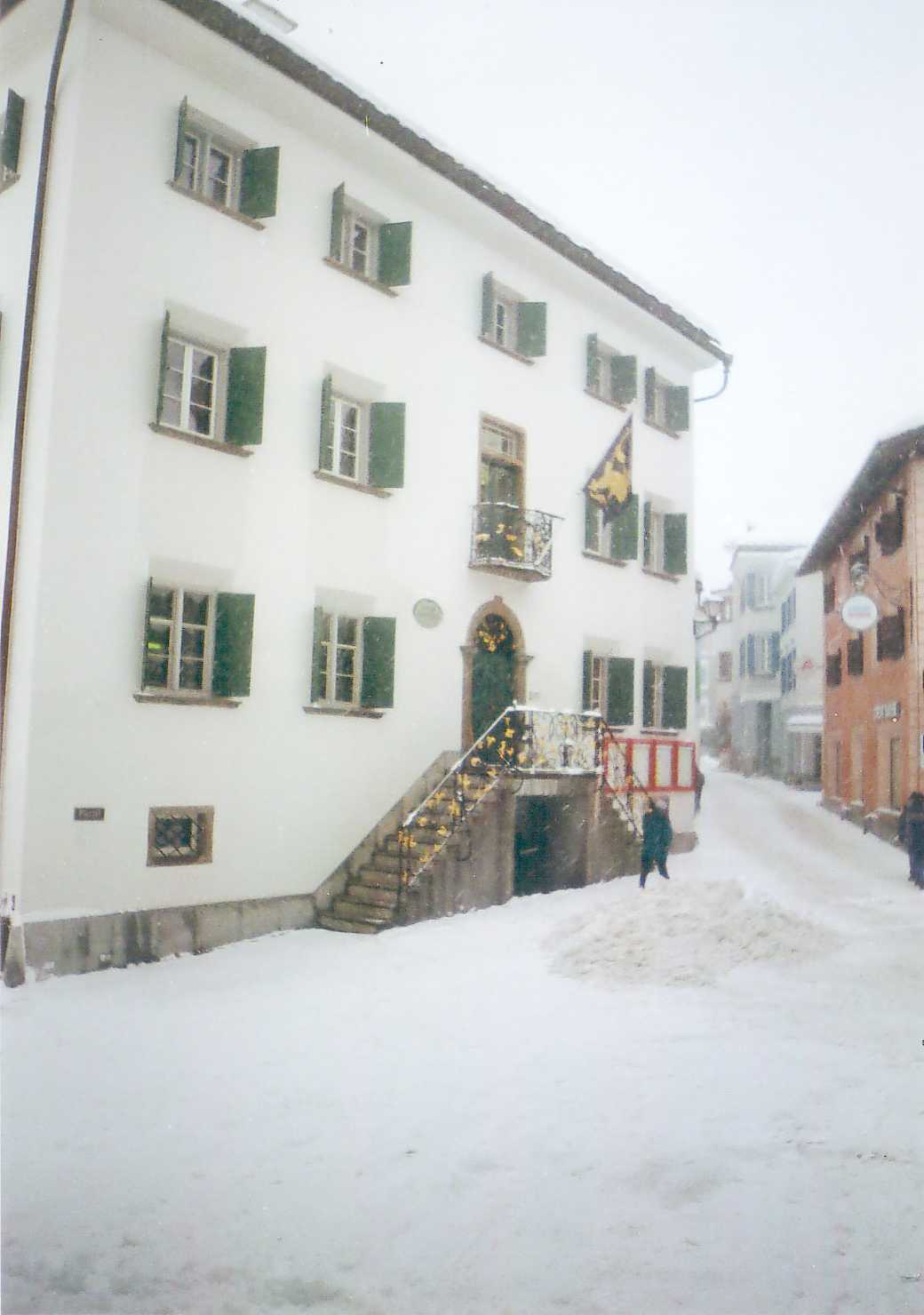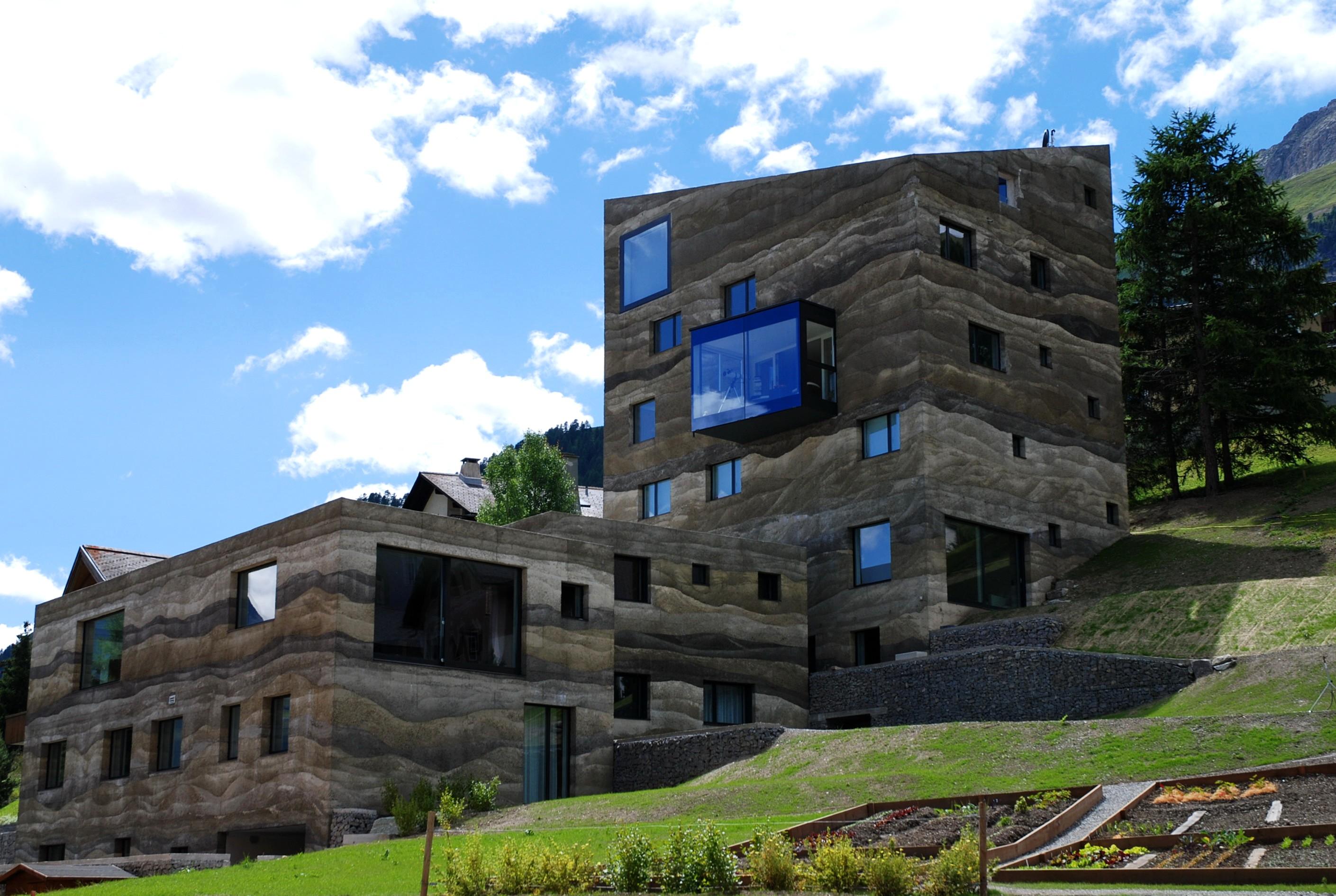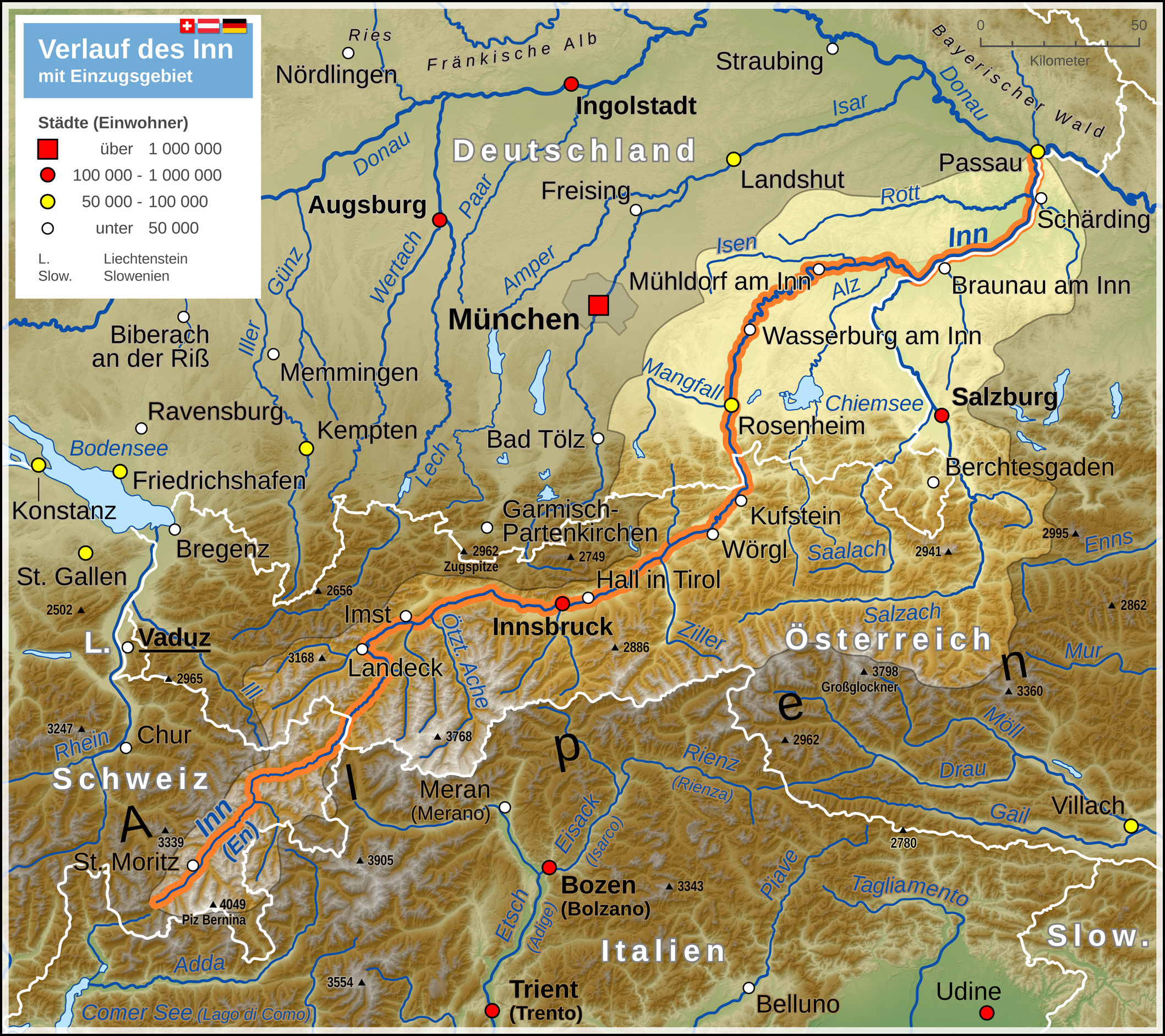|
Samedan, Switzerland
Samedan (, ) is a town and municipality in the Maloja Region in the Swiss canton of Grisons. It is served by Samedan railway station on the Rhaetian Railway network and by the Samedan Airport. History Samedan is first mentioned in 1139 as ''Samaden''. In 1334 it was mentioned as ''Semeden'', in 1367 as ''Semaden'', in 1498 as ''Sumada'' and in 1527 as ''Sameden''. Johann Heinrich Müller, 1825-1894 J08 Samaden.JPG, Samedan c. 1870 with the Bernina hotel (opened in 1865), one of the oldest hotels in the Engadin. Etching by Heinrich Müller Samedan circa 1870.jpg, A photograph of Samedan in the circa 1870s Samedan circa 1870 B.jpg, Another photographic view of Samedan in the circa 1870s ETH-BIB-Samedan-LBS H1-017880.tif, Aerial view (1954) Geography Samedan has an area, (as of the 2004/09 survey) of . Of this area, about 15.5% is used for agricultural purposes, while 9.7% is forested. Of the rest of the land, 1.9% is settled (buildings or roads) and 72.9% is unproductive ... [...More Info...] [...Related Items...] OR: [Wikipedia] [Google] [Baidu] |
Maloja Region
Maloja Region is one of the eleven administrative districts in the canton of Graubünden in Switzerland ). Swiss law does not designate a ''capital'' as such, but the federal parliament and government are installed in Bern, while other federal institutions, such as the federal courts, are in other cities (Bellinzona, Lausanne, Luzern, Neuchâtel .... It has an area of and a population of (as of ). It was created on 1 January 2017 as part of a reorganization of the Canton. accessed 16 February 2017 References {{coord, ...[...More Info...] [...Related Items...] OR: [Wikipedia] [Google] [Baidu] |
Samedan Airport
Samedan Airport, french: Aéroport de Samedan, it, Aeroporto di Samedan , also known as Engadin Airport,, french: Aéroport d'Engadin, it, Aeroporto d'Engadina, rm, Eroport da l'Engiadina is a regional airport in Samedan in the Engadin valley of Switzerland, 5 km from St. Moritz. History At the end of World War II, Swiss authorities identified existing locations that were to be modernized as regional airports, a second tier of infrastructure to support the primary urban airports, with Samedan being one of the five. Facilities The airport has one runway designated 03/21 with an asphalt pavement measuring 1800 x 40 metres (5905 x 130 ft). Because of its location at the bottom of a valley, it is not equipped with an instrument landing system. Operations At an elevation of 1,707 metres (5,600 ft), it is the second highest airliner airport in Europe (with Courchevel being the highest). It is also considered one of the most challenging airports in the world because ... [...More Info...] [...Related Items...] OR: [Wikipedia] [Google] [Baidu] |
Birth Rate
The birth rate for a given period is the total number of live human births per 1,000 population divided by the length of the period in years. The number of live births is normally taken from a universal registration system for births; population counts from a census, and estimation through specialized demographic techniques. The birth rate (along with mortality and migration rates) is used to calculate population growth. The estimated average population may be taken as the mid-year population. Natality is another term used interchangeably with 'birth rate'. When the crude death rate is subtracted from the crude birth rate (CBR), the result is the rate of natural increase (RNI). This is equal to the rate of population change (excluding migration). The total (crude) birth rate (which includes all births)—typically indicated as births per 1,000 population—is distinguished from a set of age-specific rates (the number of births per 1,000 persons, or more usually 1,000 femal ... [...More Info...] [...Related Items...] OR: [Wikipedia] [Google] [Baidu] |
Samedan Houses
Samedan (, ) is a town and municipality in the Maloja Region in the Swiss canton of Grisons. It is served by Samedan railway station on the Rhaetian Railway network and by the Samedan Airport. History Samedan is first mentioned in 1139 as ''Samaden''. In 1334 it was mentioned as ''Semeden'', in 1367 as ''Semaden'', in 1498 as ''Sumada'' and in 1527 as ''Sameden''. Johann Heinrich Müller, 1825-1894 J08 Samaden.JPG, Samedan c. 1870 with the Bernina hotel (opened in 1865), one of the oldest hotels in the Engadin. Etching by Heinrich Müller Samedan circa 1870.jpg, A photograph of Samedan in the circa 1870s Samedan circa 1870 B.jpg, Another photographic view of Samedan in the circa 1870s ETH-BIB-Samedan-LBS H1-017880.tif, Aerial view (1954) Geography Samedan has an area, (as of the 2004/09 survey) of . Of this area, about 15.5% is used for agricultural purposes, while 9.7% is forested. Of the rest of the land, 1.9% is settled (buildings or roads) and 72.9% is unproductive la ... [...More Info...] [...Related Items...] OR: [Wikipedia] [Google] [Baidu] |
Piz Roseg
Piz Roseg (pronounced as ''peetse rawzech'') is a mountain of the Bernina Range, overlooking the Val Roseg in the Swiss canton of Graubünden. There are two summits on its main ridge: :*the south-east and higher summit (3,937 m) :*the north-west summit, known as the ''Schneekuppe'' (3,920 m). There is also a prominent top on the east-north-east ridge, called the ''Roseg Pitschen'' (3,868 m) (Italian border). History The first ascent of the mountain to the ''Schneekuppe'' was by F. T. Bircham with guides Peter Jenny and Alexander Fleury on 31 August 1863. The highest point of the mountain was reached two years later by A. W. Moore and Horace Walker with guide Jakob Anderegg on 28 June 1865. Piz Roseg is separated from the neighbouring Piz Scerscen by the ''Porta da Roseg'' (3,522 m), also called the ''Güssfeldtsattel''. The Swiss side of this col – a steep ice slope of up to 70° – was first climbed by Paul Güssfeldt, with guides Hans Grass, Peter Jenny and Caspar Capa ... [...More Info...] [...Related Items...] OR: [Wikipedia] [Google] [Baidu] |
Piz Scerscen
Piz Scerscen ( Romansh, it, Monte Scerscen, formerly ''Monte Rosso di Scerscen''), culminating at 3,971 m above sea level, is one of the highest peaks in the Bernina Range, straddling the border between Switzerland and Italy. It is a satellite peak of Piz Bernina, joining it by its north-east ridge via a 3,882 m pass. Its name means 'the circular mountain' ('Scerscen' is pronounced ''cherchen''). The mountain has a prominent secondary summit called the ''Schneehaube'' (3,875 m). The first ascent of Piz Scerscen was by Paul Güssfeldt, Hans Grass and Caspar Capat on 13 September 1877 via the north-west spur, descending the same way. This is the well-known ''Eisnase'' route, involving a 100-metre ice pitch of between 60 and 70°,Collomb, Robin, ''Bernina Alps'', Goring: West Col Productions, 1988, p. 77–8 although its precise length and steepness are debateThis was the route followed by Walter Risch on the first solo ascent of the mountain in 1924. The first ascent of the north ... [...More Info...] [...Related Items...] OR: [Wikipedia] [Google] [Baidu] |
Piz Bernina
Piz Bernina ( Romansh, it, Pizzo Bernina, ) is the highest mountain in the Eastern Alps, the highest point of the Bernina Range, and the highest peak in the Rhaetian Alps. It rises and is located south of Pontresina and near the major Alpine resort of St. Moritz, in the Engadin valley. It is also the most easterly mountain higher than in the Alps, the highest point of the Swiss canton of Graubünden, and the fifth-most prominent peak in the Alps. Although the summit lies within Switzerland, the massif is on the border with Italy. The "shoulder" () known as La Spedla is the highest point in the Italian Lombardy region. Piz Bernina is entirely surrounded by glaciers, of which the largest is the Morteratsch Glacier. The mountain was named after the Bernina Pass in 1850 by Johann Coaz, who also made the first ascent. The prefix ''Piz'' comes from the Romansch language in Graubünden; any mountain with that name can be readily identified as being located in southeastern Switze ... [...More Info...] [...Related Items...] OR: [Wikipedia] [Google] [Baidu] |
Val Roseg
The Val Roseg is a valley of the Swiss Alps, located on the north side of the Bernina Range in the canton of Graubünden (Engadin). The valley is drained by the ''Ova da Roseg'', a tributary of the Flaz (Inn basin), at Pontresina. Most of the valley is part of an exclave of the municipality of Samedan. Only the bottom of Val Roseg lies in the municipality of Pontresina. The main locality, outside Pontresina on the bottom of the valley, is Roseg (1,999 m) at the end of the main road. Two mountain huts owned by the Swiss Alpine Club are located in the valley near the glaciers: the Coaz Hut (2,610 m) and the Tschierva Hut (2,584 m). The Val Roseg is surrounded by the highest mountains of Graubünden and Eastern Switzerland. The highest are Piz Bernina (4,049 m), Piz Scerscen (3,971 m) and Piz Roseg (3,937 m). The southern upper valley is heavily glaciated: the Roseg Glacier on the west side and the Tschierva Glacier The Tschierva Glacier ( Romansh: ''Vadret da Tschierva'') is a ... [...More Info...] [...Related Items...] OR: [Wikipedia] [Google] [Baidu] |
Exclave
An enclave is a territory (or a small territory apart of a larger one) that is entirely surrounded by the territory of one other state or entity. Enclaves may also exist within territorial waters. ''Enclave'' is sometimes used improperly to denote a territory that is only partly surrounded by another state. The Vatican City and San Marino, both enclaved by Italy, and Lesotho, enclaved by South Africa, are completely enclaved sovereign states. An exclave is a portion of a state or district geographically separated from the main part by surrounding alien territory (of one or more states or districts etc). Many exclaves are also enclaves, but not all: an exclave can be surrounded by the territory of more than one state. The Azerbaijani exclave of Nakhchivan is an example of an exclave that is not an enclave, as it borders Armenia, Turkey and Iran. Semi-enclaves and semi-exclaves are areas that, except for possessing an unsurrounded sea border (a coastline contiguous with internati ... [...More Info...] [...Related Items...] OR: [Wikipedia] [Google] [Baidu] |
Val Bever
Val may refer to: Val-a Film * ''Val'' (film), an American documentary about Val Kilmer, directed by Leo Scott and Ting Poo Military equipment * Aichi D3A, a Japanese World War II dive bomber codenamed "Val" by the Allies * AS Val, a Soviet assault rifle Music *''Val'', album by Val Doonican *VAL (band), Belarusian pop duo People * Val (given name), a unisex given name * Rafael Merry del Val (1865–1930), Spanish Catholic cardinal * Val (sculptor) (1967–2016), French sculptor * Val (footballer, born 1983), Lucivaldo Lázaro de Abreu, Brazilian football midfielder * Val (footballer, born 1997), Valdemir de Oliveira Soares, Brazilian football defensive midfielder Places * Val (Rychnov nad Kněžnou District), a village and municipality in the Czech Republic * Val (Tábor District), a village and municipality in the Czech Republic * Vál, a village in Hungary * Val, Iran, a village in Kurdistan Province, Iran * Val, Italy, a ''frazione'' in Cortina d'Ampezzo, Veneto, ... [...More Info...] [...Related Items...] OR: [Wikipedia] [Google] [Baidu] |
Hamlet (place)
A hamlet is a human settlement that is smaller than a town or village. Its size relative to a Parish (administrative division), parish can depend on the administration and region. A hamlet may be considered to be a smaller settlement or subdivision or satellite entity to a larger settlement. The word and concept of a hamlet has roots in the Anglo-Norman settlement of England, where the old French ' came to apply to small human settlements. Etymology The word comes from Anglo-Norman language, Anglo-Norman ', corresponding to Old French ', the diminutive of Old French ' meaning a little village. This, in turn, is a diminutive of Old French ', possibly borrowed from (West Germanic languages, West Germanic) Franconian languages. Compare with modern French ', Dutch language, Dutch ', Frisian languages, Frisian ', German ', Old English ' and Modern English ''home''. By country Afghanistan In Afghanistan, the counterpart of the hamlet is the Qila, qala (Dari language, Dari: ... [...More Info...] [...Related Items...] OR: [Wikipedia] [Google] [Baidu] |
Inn River
, image = UnterinntalWest.JPG , image_caption = Lower Inn valley from Rattenberg castle , source1_location = Swiss Alps (Lägh dal Lunghin) , source1_elevation = , source1_coordinates= , mouth_location = Danube (Passau) , mouth_elevation = , mouth_coordinates = , progression = , subdivision_type1 = Countries , subdivision_name1 = , subdivision_type2 = Cities , subdivision_name2 = , length = , discharge1_location= mouth , discharge1_avg = , basin_size = The Inn ( la, Aenus; rm, En) is a river in Switzerland, Austria and Germany. The river is long. It is a right tributary of the Danube and it is the third largest tributary of the Danube by discharge. The highest point of its drainage basin is the summit of Piz Bernina at . The Engadine, the valley of the En, is the only Swiss valley whose waters end up in the Black Sea (via the Danube). Etymology The name Inn is derived from the old Celtic words ''en'' and ''enios'', ... [...More Info...] [...Related Items...] OR: [Wikipedia] [Google] [Baidu] |





